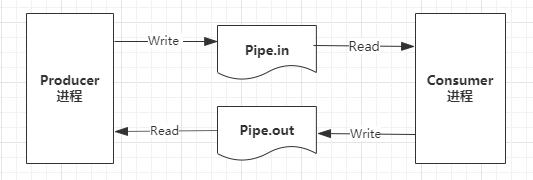Python的MongoDB模块PyMongo操作方法集锦
开始之前当然要导入模块啦:
>>> import pymongo
下一步,必须本地mongodb服务器的安装和启动已经完成,才能继续下去。
建立于MongoClient 的连接:
client = MongoClient('localhost', 27017)
# 或者
client = MongoClient('mongodb://localhost:27017/')
得到数据库:
>>> db = client.test_database # 或者 >>> db = client['test-database']
得到一个数据集合:
collection = db.test_collection # 或者 collection = db['test-collection']
MongoDB中的数据使用的是类似Json风格的文档:
>>> import datetime
>>> post = {"author": "Mike",
... "text": "My first blog post!",
... "tags": ["mongodb", "python", "pymongo"],
... "date": datetime.datetime.utcnow()}
插入一个文档:
>>> posts = db.posts
>>> post_id = posts.insert_one(post).inserted_id
>>> post_id
ObjectId('...')
找一条数据:
>>> posts.find_one()
{u'date': datetime.datetime(...), u'text': u'My first blog post!', u'_id': ObjectId('...'), u'author': u'Mike', u'tags': [u'mongodb', u'python', u'pymongo']}
>>> posts.find_one({"author": "Mike"})
{u'date': datetime.datetime(...), u'text': u'My first blog post!', u'_id': ObjectId('...'), u'author': u'Mike', u'tags': [u'mongodb', u'python', u'pymongo']}
>>> posts.find_one({"author": "Eliot"})
>>>
通过ObjectId来查找:
>>> post_id
ObjectId(...)
>>> posts.find_one({"_id": post_id})
{u'date': datetime.datetime(...), u'text': u'My first blog post!', u'_id': ObjectId('...'), u'author': u'Mike', u'tags': [u'mongodb', u'python', u'pymongo']}
不要转化ObjectId的类型为String:
>>> post_id_as_str = str(post_id)
>>> posts.find_one({"_id": post_id_as_str}) # No result
>>>
如果你有一个post_id字符串,怎么办呢?
from bson.objectid import ObjectId
# The web framework gets post_id from the URL and passes it as a string
def get(post_id):
# Convert from string to ObjectId:
document = client.db.collection.find_one({'_id': ObjectId(post_id)})
多条插入:
>>> new_posts = [{"author": "Mike",
... "text": "Another post!",
... "tags": ["bulk", "insert"],
... "date": datetime.datetime(2009, 11, 12, 11, 14)},
... {"author": "Eliot",
... "title": "MongoDB is fun",
... "text": "and pretty easy too!",
... "date": datetime.datetime(2009, 11, 10, 10, 45)}]
>>> result = posts.insert_many(new_posts)
>>> result.inserted_ids
[ObjectId('...'), ObjectId('...')]
查找多条数据:
>>> for post in posts.find():
... post
...
{u'date': datetime.datetime(...), u'text': u'My first blog post!', u'_id': ObjectId('...'), u'author': u'Mike', u'tags': [u'mongodb', u'python', u'pymongo']}
{u'date': datetime.datetime(2009, 11, 12, 11, 14), u'text': u'Another post!', u'_id': ObjectId('...'), u'author': u'Mike', u'tags': [u'bulk', u'insert']}
{u'date': datetime.datetime(2009, 11, 10, 10, 45), u'text': u'and pretty easy too!', u'_id': ObjectId('...'), u'author': u'Eliot', u'title': u'MongoDB is fun'}
当然也可以约束查找条件:
>>> for post in posts.find({"author": "Mike"}):
... post
...
{u'date': datetime.datetime(...), u'text': u'My first blog post!', u'_id': ObjectId('...'), u'author': u'Mike', u'tags': [u'mongodb', u'python', u'pymongo']}
{u'date': datetime.datetime(2009, 11, 12, 11, 14), u'text': u'Another post!', u'_id': ObjectId('...'), u'author': u'Mike', u'tags': [u'bulk', u'insert']}
获取集合的数据条数:
>>> posts.count()
或者说满足某种查找条件的数据条数:
>>> posts.find({"author": "Mike"}).count()
范围查找,比如说时间范围:
>>> d = datetime.datetime(2009, 11, 12, 12)
>>> for post in posts.find({"date": {"$lt": d}}).sort("author"):
... print post
...
{u'date': datetime.datetime(2009, 11, 10, 10, 45), u'text': u'and pretty easy too!', u'_id': ObjectId('...'), u'author': u'Eliot', u'title': u'MongoDB is fun'}
{u'date': datetime.datetime(2009, 11, 12, 11, 14), u'text': u'Another post!', u'_id': ObjectId('...'), u'author': u'Mike', u'tags': [u'bulk', u'insert']}
$lt是小于的意思。
如何建立索引呢?比如说下面这个查找:
>>> posts.find({"date": {"$lt": d}}).sort("author").explain()["cursor"]
u'BasicCursor'
>>> posts.find({"date": {"$lt": d}}).sort("author").explain()["nscanned"]
建立索引:
>>> from pymongo import ASCENDING, DESCENDING
>>> posts.create_index([("date", DESCENDING), ("author", ASCENDING)])
u'date_-1_author_1'
>>> posts.find({"date": {"$lt": d}}).sort("author").explain()["cursor"]
u'BtreeCursor date_-1_author_1'
>>> posts.find({"date": {"$lt": d}}).sort("author").explain()["nscanned"]
连接聚集
>>> account = db.Account #或 >>> account = db["Account"]
查看全部聚集名称
>>> db.collection_names()
查看聚集的一条记录
>>> db.Account.find_one()
>>> db.Account.find_one({"UserName":"keyword"})
查看聚集的字段
>>> db.Account.find_one({},{"UserName":1,"Email":1})
{u'UserName': u'libing', u'_id': ObjectId('4ded95c3b7780a774a099b7c'), u'Email': u'libing@35.cn'}
>>> db.Account.find_one({},{"UserName":1,"Email":1,"_id":0})
{u'UserName': u'libing', u'Email': u'libing@35.cn'}
查看聚集的多条记录
>>> for item in db.Account.find():
item
>>> for item in db.Account.find({"UserName":"libing"}):
item["UserName"]
查看聚集的记录统计
>>> db.Account.find().count()
>>> db.Account.find({"UserName":"keyword"}).count()
聚集查询结果排序
>>> db.Account.find().sort("UserName") #默认为升序
>>> db.Account.find().sort("UserName",pymongo.ASCENDING) #升序
>>> db.Account.find().sort("UserName",pymongo.DESCENDING) #降序
聚集查询结果多列排序
>>> db.Account.find().sort([("UserName",pymongo.ASCENDING),("Email",pymongo.DESCENDING)])
添加记录
>>> db.Account.insert({"AccountID":21,"UserName":"libing"})
修改记录
>>> db.Account.update({"UserName":"libing"},{"$set":{"Email":"libing@126.com","Password":"123"}})
删除记录
>>> db.Account.remove() -- 全部删除
>>> db.Test.remove({"UserName":"keyword"})
